Punk Perestroika 80

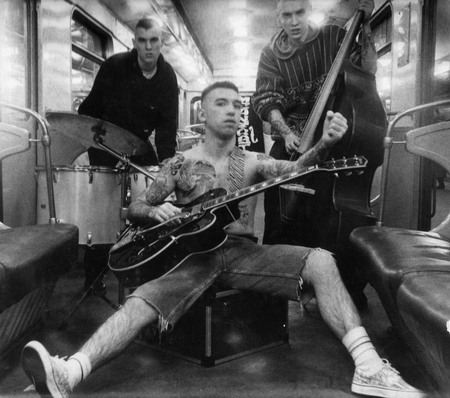


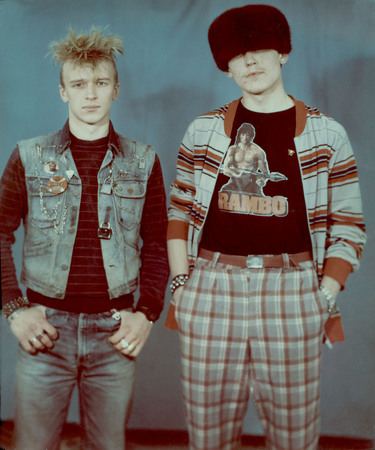



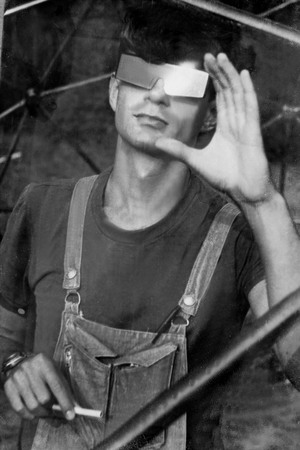



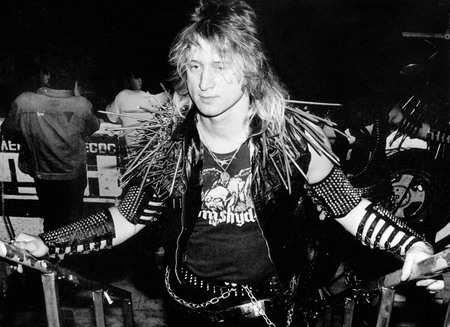













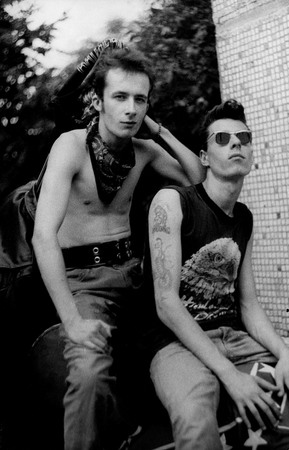
Melky, Sabbat, Lebed’ in Red Square. Moscow. 1987. Dima Sabbats collection
Psychobilly at Leningrad underground. Stas Bogorad and “Meantraitors” group. 1989. Denis Kuptsov collection
Eric Ershun. Kolya Kanotye by “El’f” cafe. Leningrad. 1987
Alexander Boyko. Robot and “nightingale” – so was called drunkard inhabitants of Leningrad. 1983. Ruslan Ziggel collection
Punk and “luber” in photo studio. Moscow. 1987. Misha Buster collection
Dima Hank is one of the founders pank-hardcore group “Tchudo-Yudo”. The group appeared at the Moscow underground. On the breaks between concert. Dima Hank collection
Ed Sakson, Moscow tone-up, passing by Kakhovka. Moscow. 1988. Eduard Ratnikov collection
Misha Klesh and Festival beauty. Moscow. 1985. From Mikhail Boyko collection
New wave in the Soviet style. 1986. Gosha Shaposhnikov collection
Natasha Vasilieva. Pashtetina and Maja. Leningrad. 1986. Tatiana Alexandrova collection
Breakage on road. Yus and Ilyas, participants of the first Moscow moto-gang “Black Aces”. Moscow. 1988. Dima Sabbats collection
Petra Gall. Ed and Rus at shooting for German magazine “Blinkt Punkt”. Moscow. 1987
Heavy-metal style of the scenic image in a smaal Soviet town Grodno. Leningrad. 1987. Yevgeny Belov collection
Vladimir Peshkov. Venus of Nevsky area at circle of connoisseurs of a beautiful. Ruslan, Misha Komarov. Leningrad. May, 1983
Start of rockers moto-column in Luzhniki. Moscow. 1988. Lavrik collection
New youth images. Yulia Locomotiv and Ira Gru. Moscow. 1988. Ira Afonina collection
Sveta-candy in a forest hippie camp. 1986. Sasha Poni collection
Villy and Lyosha Klein by the horses of Anichkov bridge. Leningrad. Mid of 1980s. Villy collection
Garry Assa. Alan’s veteran songs at Preobrazhenka ‘punk-saloon’. Moscow. 1987
Veta. Leningrad. 1989. Veta Pomerantseva collection
Igor Shaposhnikov. Vadim Kutyavin, New wave. Chelyabinsk-70. 1985
Alexander Boyko. Ruslan and “Teddy Boys”. Pub at Fontanka street, Leningrad. 1984. Ruslan Ziggel collection
Lads and beasts. Chusia, Suria, Nikolay and Indiuk. Moscow. 1988. Igor Chirik collection
Regina and Larisa (duet of couturiers La-Re) with Misha Korolev. Moscow. 1988. From Larisa Lazareva collection
Future stars of Moscow scene “E.S.T.” group. Moscow. 1986. From Andrei Gerneza collection
Garik, Alan and Katya Filippova. Moscow. 1988. Garry Assa collection
Leningrad cowboys: Denis Koschey and comrade. 1989. Denis Kuptsov collection
Lille, 5.06.2009—12.07.2009
exhibition is over
Lille3000
Gare Saint-Sauveur – Boulevard Jean-Baptiste Lebas – 59 000 Lille
Share with friends
Curators: Irina Meglinskaya and Misha Baster
Exhibition shedule
-
5.06.2009—12.07.2009
Moscow
Central exhibition hall Manege
-
5.06.2009—12.07.2009
Lille
Lille3000
For the press
1980s fashion: subculture style
The 1980s brought fashionable perestroikas and a perestroika of fashion. A period that saw the emergence of new styles and new creative spaces. Charged by the energy of anticipated change, Soviet youth created new musical styles, street fashion, communal squats...
This project by Misha Baster and Irina Meglinskaya is a photographic history of the Soviet artistic underground, an attempt to present anew and reconstruct something that many people experienced and then forgot. Bikers, breakdancers, Teddy boys, New Wavers, punks, metalheads, rockers, rockabillies. Zhanna Aguzarova, Garri Assa, Alexander Petlyura, Andrei Bartenev, Viktor Tsoi, Sergei Kuryokhin, Timur Novikov, Malchishnik and Dolphin... More than three hundred amateur or professional, black-and-white or colour photographs from the private archives of those who took part in 1980s street movements, from squares, bridges, streets, concerts, kitchens, beaches, motorcycles, escalators, railway tracks, balconies, benches, bus stops, stages and stadiums.
This alternative to the Soviet regime originated from subcultures formed in the early 1980s. Their participants and heroes occupied squats and street podiums, inveigling ordinary passers-by to join them in a celebration of civil disobedience. The exaggerated dress code, hairstyles, tattoos and make-up were intended to shock, it was a demonstration of freedom and independence pushed to the limit, challenging’normal’, conventional Soviet imagery.
The photo-premiere’Hooligans of the 80s’ is part of the eponymous project to be continued in Misha Baster’s book. In a series of interviews those involved in these provocative street protests give the author and co-participant their own view of the turbulent 1980s, when they used their perception of trendsetting foreign ideas and experimental music to create a unique world with its own fashion, music, language and marketplace. The book consists of more than twenty interviews with outstanding representatives of unofficial culture, and over eight hundred photographs from their personal archives.’In the perestroika period many adolescents took up brutal non-Soviet concepts characterised by anti-heroism, bravado and the originality of the hooligan. All this happened as part of the clash between’normal’ and’abnormal’, and these style images, in turn, protected our own adolescent idealism and became key criteria in the search for others like ourselves on the streets of many Soviet cities’ (M. Baster).
The 1980s marked a turning point in the stylistics of the country as a whole.’Lifting’ the Iron Curtain so that new rhythms, new goods and fabrics filtered through proved problematic for adolescent identity, but nonetheless introduced the possibility for experimentation in human relations, in self-expression and lifestyle. These aesthetics were projected into contemporary society to the acoustic accompaniment of musicians who would become part of the project, a soundtrack to the history of 1980s hooligans.





